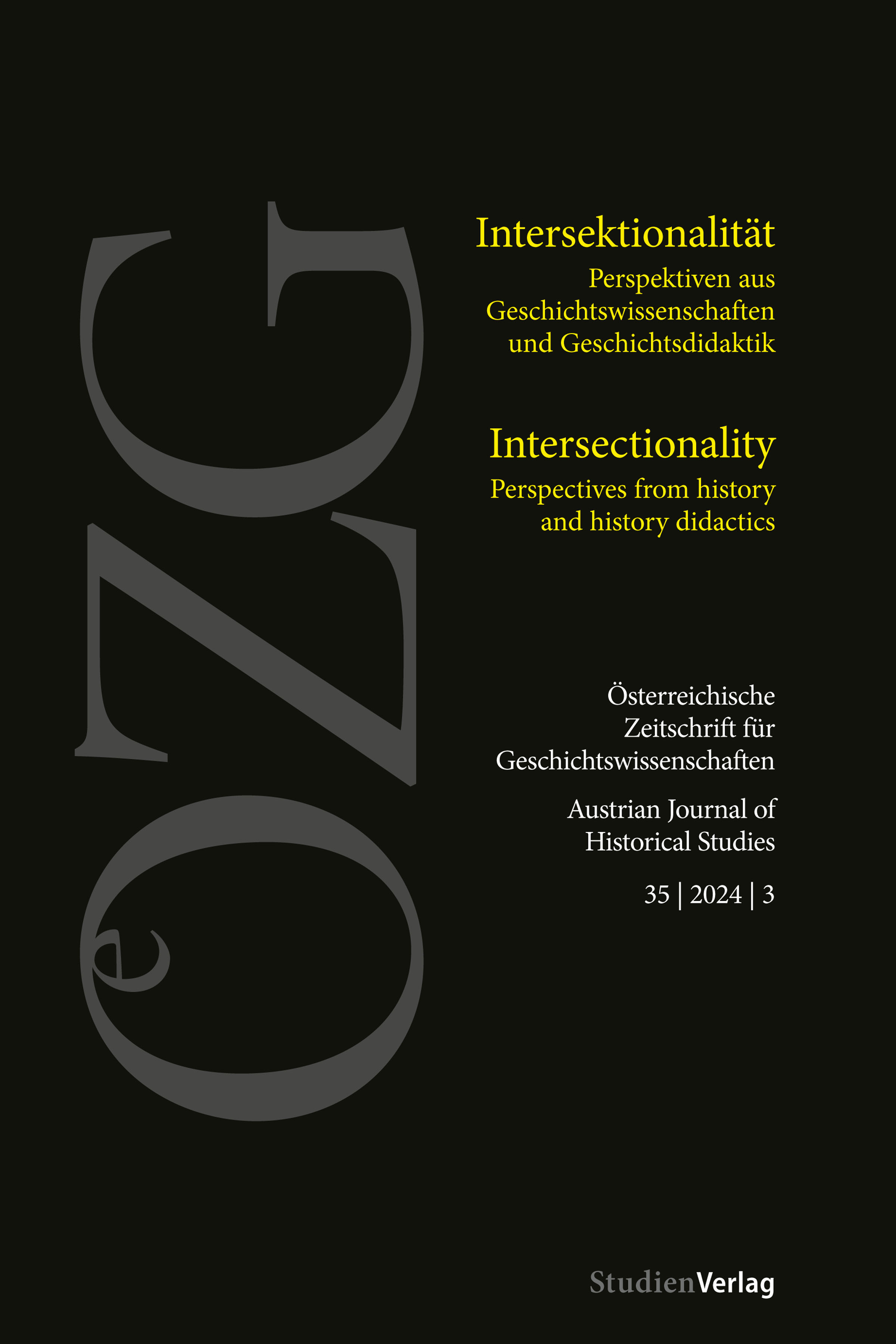Intersektionale Perspektiven auf das politische Selbstverständnis der Westdeutschen Frauenfriedensbewegung (1951–1974)
DOI:
https://doi.org/10.25365/oezg-2024-35-3-8Schlagworte:
peace movement, intersectionality, race, gender, class, Federal Republic of GermanyAbstract
This paper shows how intersectionality adds new perspectives to both German history and the global history of the Cold War by examining the Westdeutsche Frauenfriedensbewegung (West German Women’s Peace Movement, WFFB). It identifies five intersectional categories that shaped the WFFB’s political ideas and activities (gender, class, race, age, religion/ideology). Furthermore, it demonstrates how the WFFB viewed the intersection of inequalities and differences. Intersectional discourse analysis helps situate the WFFB within multiple historical processes such as women’s emancipation, decolonization, and the global Cold War.
Downloads
Veröffentlicht
Zitationsvorschlag
Ausgabe
Rubrik
Lizenz
Copyright (c) 2024 Österreichische Zeitschrift für Geschichtswissenschaften

Dieses Werk steht unter der Lizenz Creative Commons Namensnennung 4.0 International.


